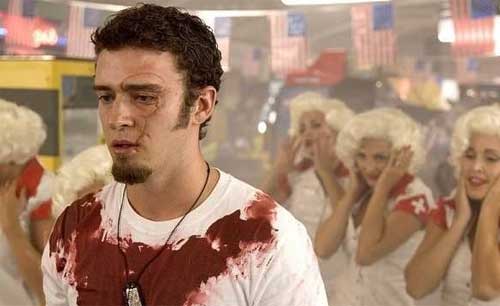Title: Andre The
Giant
Director: Jason
Hehir
Released: 2018
Plot: Documentary
charting the career and life of wrestling legend Andre Rene
Roussimoff better known as Andre the Giant.
Review: If we are
to believe everything about Andre we would be lead to believe he had
three rows of teeth and could drink 107 beers in a single sitting.
But standing at 7ft 4 in Andre was as big as his legend not to
mention one of the most recognisable faces in professional wrestling
even to non wrestling fans and it’s this legend that director Jason
Hehir attempts to find the truth behind as he features extensive
interview footage with his family, his fellow wrestlers and “Princess
Bride” cast members to craft a portrait of this iconic figure. This
is a film certanly not afraid to showcase his life from the
triumphant highs to the crushing lows which lead to his premature
demise.
Charting his rise to
fame in the first half it’s clear that Hehir is as fascinated with
Andre’s status as a real life giant as everyone who saw him while
he charts the making of his legend as he starts his rise through the
wrestling ranks becoming a headline attraction back when wrestling
was still broken up into territories defined by local television
coverage. Soon ending up as one of the biggest stars of Vince
McMahon’s “World Wrestling Federation” now better known as the
“WWE” as he helped McMahon essentially bring the end to the
territories as the company rode the introducion of cable TV.
One of the strengths
of the documentary really is in how Hehir manages to make a film
which is as appealing to the establish fan as it is to the newcommer
as while there might be extensive talk of the wrestling territories
and backstage politics here memorably highlighted by Andre chasing
off his minder while he’s trying to play cards. Hehir manages to
explain the mechanics of the wrestling industry to the newcomer
without slowing down the pace of the documentary. To this extent it
can be alittle jarring to have Hulk Hogan seemingly hijacking the
documentary to talk about his own career but thankfully he’s on
refreshingly modest form and its inclusion is more to build up the
showdown between himself and Andre and their iconic match at
Wrestlemania 3.
As a wrestling fan
the film more than delivers especially with the wealth of archive
footage which is included, especially for the lesser seen early
portions of Andre’s career. The documentary also does not shy away
from the brutal backstage politics of wrestling with many of the
wrestlers interviewed openly discussing Andre intentionally roughing
up wrestlers who either annoyed him or he perceived as threatening
his spot and its refreshing that the documentary doesn’t shy away
from the more negative aspects of Andre which only adds to the build
up to his match with Hogan were going into the match Hogan had no
idea if Andre was going to go along with his match plan or not.
While a large
portion of the film is unsurprisingly devoted to his wrestling career
Hehir does touch briefly on the making of “The Princess Bride”
were he memorably appeared as the giant Fezzik a role which William
Goldman had written with him in mind. Perhaps disappointingly to fans
of the film this section is one of the briefest but it does feature
some fond memories by his co-stars Cary Elwes and Billy Crystal
aswell as Director Rob Reiner reminiscing of dealing with a drunk
Andre suspended on wires so they could film a horse riding sequence.
Unquestionably this
is both touching tribute to the legendary wrestler which wrestling
fans will certainly enjoy but at the same time accessable enough that
the uninitiated will still find much to enjoy here.

































